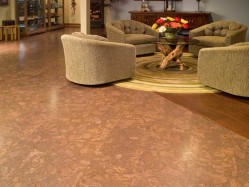There are different option for flooring your basements like hardwood floor, laminate, ceramic and
porcelain tile. Once always tends to get confused with the choice of options that is available in the
market for the basement flooring. This indeed is a tricky task, as the basement floor always comes
with limitations which make you crawl around all the probable choices. The biggest concern in any kind
of basements is the unwanted moisture and if by remote chance there is basement flooding there are
always an opportunity for the molds, mildews and bacteria to grow. The moisture always influences the
cement that bonds the floors, tiles to weaken and accumulates the bacteria.
Here are basic tips that assist you before you could start with your planning designs for your basement.
To ensure that the floor of your basement is appropriate for any kind of designs or flooring, spread
waterproof sheet on the floor, the sides and corners of the wall. Then, seal this sheet with the tape on
all sides so that there is no space for the air to enter. Leave these sheets for about twenty four hours
and later check under these sheets if they are accumulated by the moisture. If you see the moisture,
then you must first resolve the dampness issue. You can get this done by the professionals and remold
the basement.
If the sheets are not accumulated by moisture and are dry, plan out for your customized designs.
As mentioned earlier, you may choose from carpet, hardwood floor, engineered hardwood floor,
laminate floor, ceramic and porcelain tile and cement flooring options. Laminate floors are the most
recommended flooring because they are moisture resistant wood based core and a resin based
melamine or aluminum oxide enhancing facade with an obvious coating of aluminum oxide. This makes
the surface stronger and shields against stain and scratch
Before choosing any kind of basement flooring always ensure to perform the moisture test done and
have the professional check the basements usability.

















